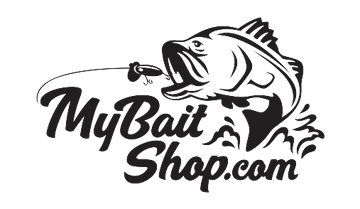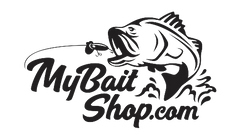L & S Roots The Walter Heinze Story
L & S Roots: The Walter Heinze Story
L & S Bait Company - Bradley, Illinois


One could call Walter Heinze a Fisherman's Fisherman. The Heinze family of Illinois are avid sportsmen, being fishers and hunters par excellence for several generations and it is safe to say that Walter was of great influence. His nephew, Terry Heinze Sr. spoke to us about fishing and hunting with an enthusiasm that left us exhausted!
Terry's father, Dick Heinze, held the Illinois record for carp (42 lbs.) from 1928 until just before his passing, a record that wasn't broken until after his death. A framed picture of Dick and his record catch is a treasure the family still loves. Bound albums of pictures of family members with numerous catches of fish or hunting successes illustrated the depth of the family's interest in these sports.
The story of Walter Heinze, however, drew us to meet with Terry Heinze Sr. Walt fished the Kankakee River starting around the 1920's and was as successful a fisherman as anyone in the area. Among his fishing buddies and good friends was Harold LeMasters, co-founder of the L&S Bait Company of Bradley, Illinois.
Walter was a pattern maker by trade and worked for the David Bradley Corporation, a manufacturer of walk-behind garden tractors and given his vocation, used his skills to make his own lures. He got great satisfaction from catching fish but the pleasures multiplied when he fooled them with a lure that he had invented and produced. One look at his tackle box and it was evident that Walter not only was a good fisherman, but a great lure maker as well! None of the lures in his box were commercially produced and in looking through all the boxes of material that once belonged to Walter, nary a commercial lure was seen!

Early Wooden Le Master Shiner Minnows
Walter's favorite lures were jointed and had a diving action lip that not by coincidence looked very much like the diving lips found on L&S jointed lures such as the Bassmaster, Musky Master, and Pike Master to name but a couple. Walter experimented with various lip designs as shown by the different styles on these lures.

Lip Molds and Hammered Lip
Walter's lures were hand-made of wood and had metal lips that were formed by hammering thin sheets of brass into the desired shape while laid on wood forms he had made. As the desired lip shapes developed, Walt then built metal dies that would punch out the lips in several different sizes to accommodate the various size lures he created.
The early lures made by Walter were jointed, particularly in the smaller bass size lures but he evolved into producing double-jointed, three-section lures that provided more action than their two-section counterparts. He virtually made everything he fished with including tackle boxes, bucktail spinners, Al Foss type pork rind baits, cane rods and even bobbers. He even made molds for split shot and a small hand-operated machine that trimmed off the rough edges left from the mold!
He caught walleye up to 12 pounds in the river on his lures as well as northern and bass but as the true sportsman he was, he never kept a fish, believing in the catch and release even back in the 1920's!

Musky Lures by Walter Heinze
As the river became more crowded, Walter became enchanted with musky and began travelling to Wisconsin. He constructed a special musky lure tackle box which was divided into floating and sinking models and continued his catch and release practice. Walter also made a mechanical duck lure for musky fishing that was constructed of wood with a prop and shaft that was powered by rubber bands to make its feet paddle. The lure appears to have been lost to history as none of the family members know of its whereabouts.

Plastic Lure Molds
Though he only used wood lures for his own fishing, Walter used his pattern making skills to construct wood molds to produce his favorite lures in plastic. Once perfected, metal dies were made from the wood molds to transform the plastic into the desired shapes for cutting and trimming. Of note is that the body of a jointed lure was made in one piece and then cut into two pieces which were then jointed together by appropriate fasteners.
Walter's fishing success plus his skills as a lure maker led his fishing buddy, Harold LeMaster to offer Walter the opportunity to go into the lure making business together. Though the offer was tempting, his years of service with the Bradley Corporation and the security of his job led him to declined the offer.
Subsequently, in the late 1930's, Harold LeMaster formed a partnership with Phil Shriner and formed the L&S Bait Company of Bradley, Illinois. Walter in turn produced lip and body molds for the L&S Bait Company. The company's success led to the opening of a second facility in 1950 in Clearwater, Florida. Walter finally retired from David Bradley and Harold LeMaster was sure his friend would rejoin him and offered to move Walter and his wife to Florida to further test, refine and develop lures. But Walter again declined the offer and lived out his years in Bradley, enjoying the great midwest outdoors.
The L&S Bait Company continued it's success and all of it's operations were moved to Florida in 1972 and the company continues in business today, producing a wide variety of fishing lures, some of which are still patterned after Walter's creations!

L&S Salesman's Display
Terry Heinze Sr. and his sons remain avid fishermen and Terry's interest in the L&S Bait Company due to his uncle's relationship led him to purchase this salesman's display case at a rummage sale many years ago - a true 'field find' that I know would make any L&S collector envious!
(Note: the above was written by Dan Basore and Tom Jacomet in the original 2002 Lure Lore article.)
- Check out Episode 2 of My Bait Shop Minutes below for a discussion of opaque eyes vs. the introduction of life like eyes on the Bass Master and other L&S models:
If anybody has additional information or paperwork such as early advertisements they would share it would be greatly appreciated.

Interesting Heddon Color

This odd color for a Heddon Gamefisher is believed to be called "Rainbow Scale" which goes by the Heddon color code 9Z. On my Heddon Color Identification page I have a picture of a Heddon Vamp in this color but it differs in both size of scale pattern and has a blue spine and face rather than green. (Picture courtesy of Dennis Boulais)

If you have any further information on any of the items displayed on this page which you'd like to share, please send your comments to me and I'll update the page accordingly. Contributions of interesting items and/or unknowns are encouraged.
© 2020, My Bait Shop, LLC


